Pellegrino Artusi, author of the famous Italian cookbook La Scienza in Cucina e l’Arte di Mangiare Bene (The Science of Cooking and the Art of Eating Well), is the father of Italian cuisine. This year – the 100th anniversary of his death – will be remembered with special events and celebrations, especially in Forlimpopoli, Artusi’s birth place, and Florence, the city where Artusi spent his life.
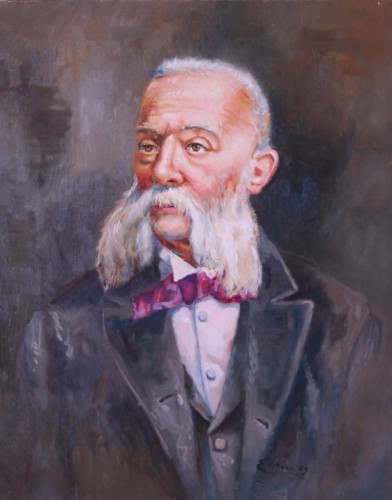
Artusi made his fortune as a silk merchant, but after retiring he devoted himself to fine dining. In 1891, at the age of 71, he completed the 600+ page tome in which he included amusing anecdotes and menus, as well as recipes. He couldn’t find a publisher and so self-published the large volume. It took him four years to sell a thousand copies. The self-published second edition sold faster, so he increased the print-run of the third. Then, all the hard work paid off – the book was discovered by the middle class.
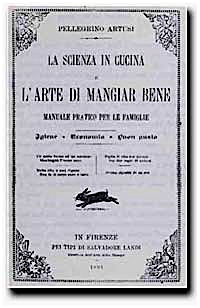
One of the reasons for its popularity is that Artusi wrote his book entirely in Italian – this at a time when most professional chefs were French-trained, and their books were so sprinkled with French terminology that they were hard for the uninitiated to follow. Also, Artusi was a bon-vivant, a noted raconteur, and a celebrated host; he knew many of the leading figures of his day and read widely in the arts and sciences. Almost half his recipes contain anecdotes or snippets of advice on subjects as varied as regional dialects and public health: while you may open the book to find out how to make Minestrone or a German cake, you will probably read on to find out how Artusi escaped cholera, or what the Austrian troops who occupied Northern Italy in the 1840’s were like.
He also created an appendix of menus: “As it frequently occurs that one finds himself unsure of what dishes to select when one has to offer a dinner” Artusi wrote, “I thought it well to provide this appendix, which gives the menus for an elegant dinner for each month of the year, as well as several menus tailored for specific holidays. I’ve omitted desserts because the seasons, with their various fruits, will council you better than I could. Even if you can’t follow these menus to the letter, they’ll at least give you some ideas that will make your selections easier.”
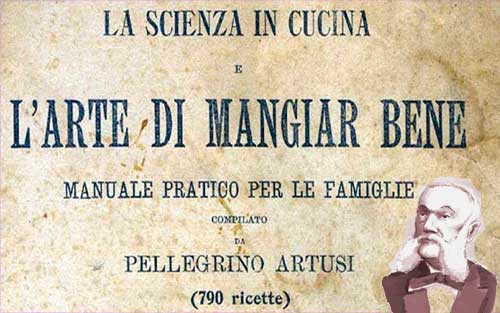
Artusi’s book stands with Manzoni’s great novel, I Promessi Sposi (The Betrothed), and the music of Verdi as works that not only are great unto themselves but represented a sense of identity and self-worth to a nascent country with no nationalistic feeling … Artusi chose to give Italians their definition by telling them how they ate … Anyone who seeks to know Italian food avoids Artusi at his or her peril. He is the fountainhead of modern Italian cookery,” wrote Fred Plotkin in Gastronomica.
Before Artusi died in Florence in 1911, more than 200,000 copies had been already sold. Today, the book is a perennial best seller in Italy and the recipes are still used. It has been translated in Spanish, Dutch, German and English. In 2003, the University of Toronto Press, published a new English translation that is still in print.
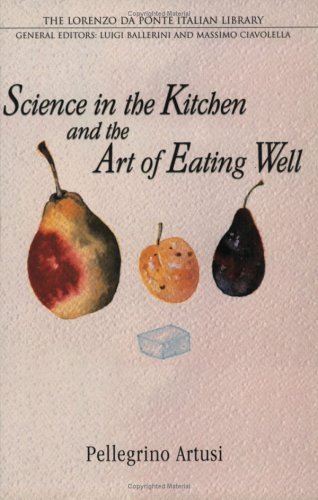
L’Artusi, as the book is called in Italy, went on to become one of the most read books of the time, a household icon, and a source of inspiration for generations of cooks. There is even an Italian language iPhone app that contains all of Artusi’s 790 recipes.
Although he became famous for his first book, Artusi wrote another – a practical manual for the kitchen – in 1904, with over 3,000 recipes, simply entitled Ecco il Tuo Libro di Cucina (Here is Your Cookbook). Last month, Artusi became a fictional amateur detective in a popular murder mystery written by Pisan Marco Malvaldi – Odore di Chiuso (Smells Stuffy).
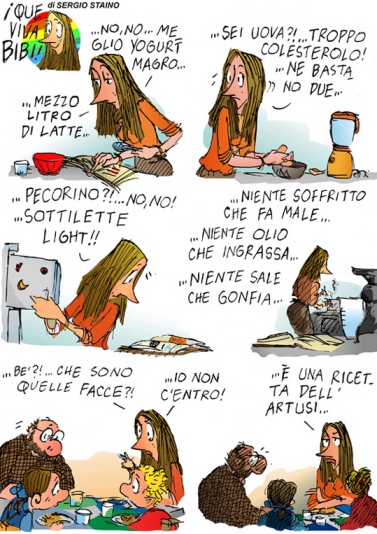
The 100th anniversary events and initiatives to celebrate Artusi include conferences in Florence and Folimpopoli about Artusi and his work, Artusi-themed dinners held in different Italian cities on the 17th of March, Italy’s new national holiday to celebrate Italy’s unification, theatrical performances, various demonstrations and videos, and a national competition.
In Florence, on 31 March, an exhibition, entitled Pellegrino Artusi: il tempo e le opere, will open at the National Central Library. The exhibition will show original work and documents in the life of Artusi and his relationship with the world of publishing. The ‘Artusian’ celebrations will continue in June with a week of culinary stands in Piazza d’Azeglio; in November there will be an Artusi Week, involving catering schools in Florence, as well as restaurant and hotel owners.
